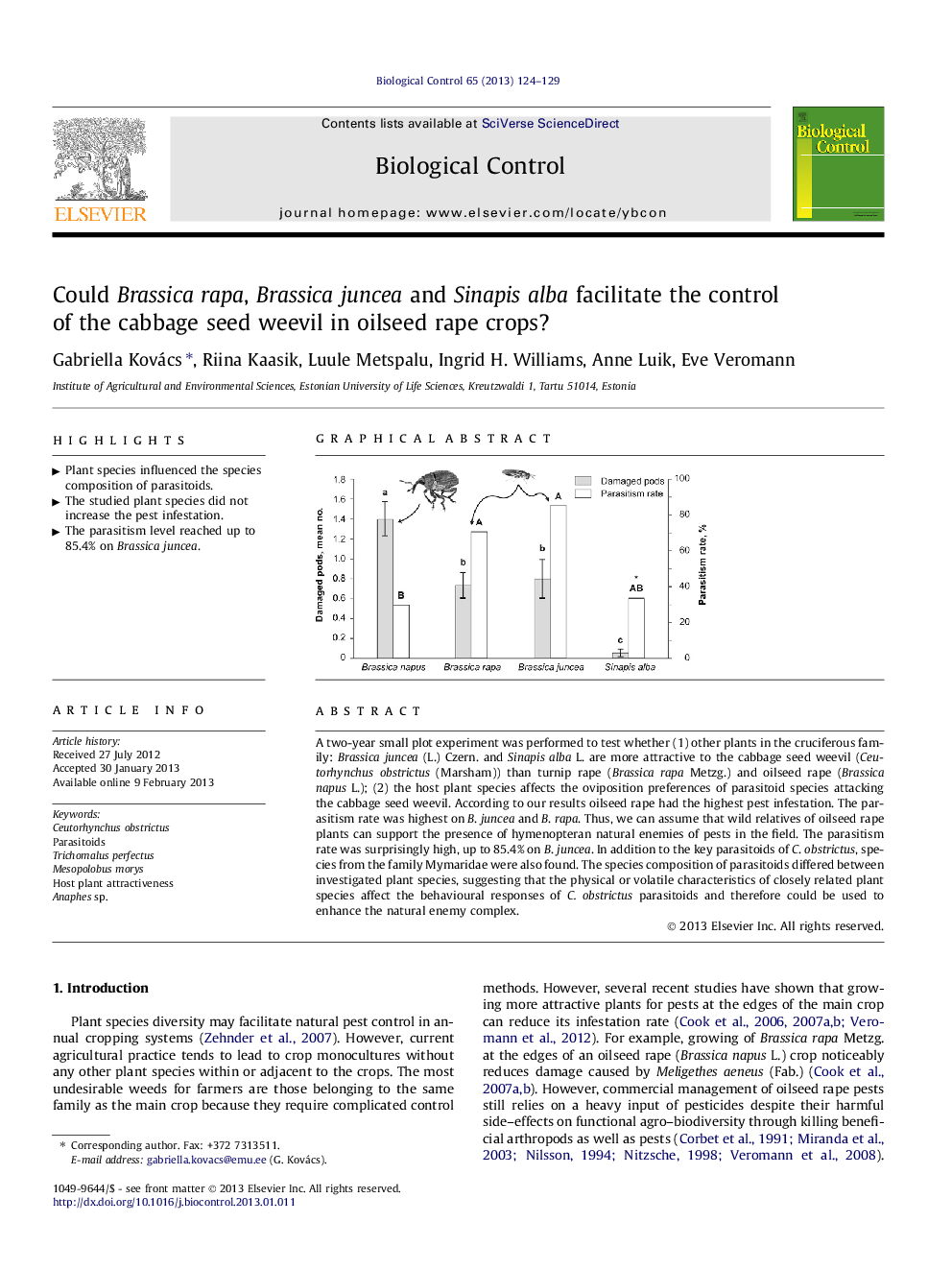| کد مقاله | کد نشریه | سال انتشار | مقاله انگلیسی | نسخه تمام متن |
|---|---|---|---|---|
| 6372865 | 1321063 | 2013 | 6 صفحه PDF | دانلود رایگان |
A two-year small plot experiment was performed to test whether (1) other plants in the cruciferous family: Brassica juncea (L.) Czern. and Sinapis alba L. are more attractive to the cabbage seed weevil (Ceutorhynchus obstrictus (Marsham)) than turnip rape (Brassica rapa Metzg.) and oilseed rape (Brassica napus L.); (2) the host plant species affects the oviposition preferences of parasitoid species attacking the cabbage seed weevil. According to our results oilseed rape had the highest pest infestation. The parasitism rate was highest on B. juncea and B. rapa. Thus, we can assume that wild relatives of oilseed rape plants can support the presence of hymenopteran natural enemies of pests in the field. The parasitism rate was surprisingly high, up to 85.4% on B. juncea. In addition to the key parasitoids of C. obstrictus, species from the family Mymaridae were also found. The species composition of parasitoids differed between investigated plant species, suggesting that the physical or volatile characteristics of closely related plant species affect the behavioural responses of C. obstrictus parasitoids and therefore could be used to enhance the natural enemy complex.
Highlights⺠Plant species influenced the species composition of parasitoids. ⺠The studied plant species did not increase the pest infestation. ⺠The parasitism level reached up to 85.4% on Brassica juncea.
Journal: Biological Control - Volume 65, Issue 1, April 2013, Pages 124-129
